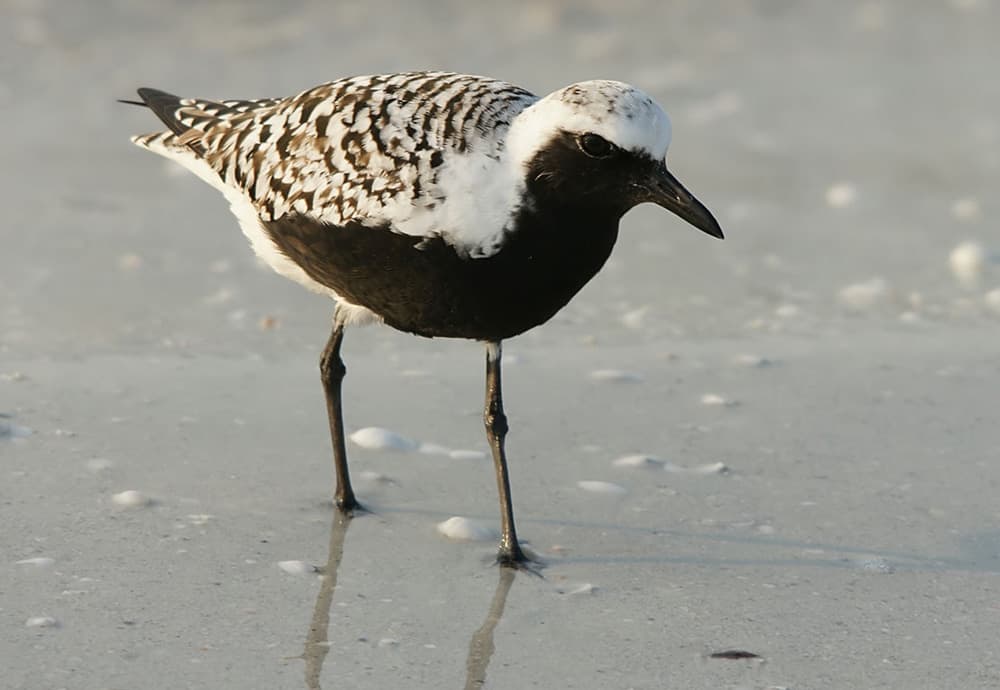What Does a Black-bellied Plover Look Like?
The black-bellied plover is a medium-sized shorebird that is the largest plover found in North America. It has a round head with a stocky neck and relatively long, black legs. The breeding male has a solid black face, throat, and belly that contrast strikingly with the bright white running from its crown to its wings.
It sometimes has a light gray cap while its lower belly, rump, and undertail coverts are white. Its back and wings have a barred pattern of black, white, and gray, sometimes with a faint brownish wash.
Listen For
The black-bellied plover’s call is a high-pitched, rolling whistle: pee-oh-wee.
Find It
The black-bellied plover breeds in the northernmost parts of Alaska and the Arctic Circle in Canada, preferring lowland tundra environments near the coast. The black-bellied plover migrates south down along the Pacific and Atlantic coasts of Canada. It spends winter on virtually all coasts of the United States as well as down along the coasts of Central and South America and the Caribbean islands. In these areas it prefers marshes, mudflats, fields and beaches.
Feeding Behavior
While on breeding grounds, the black-bellied plover feeds primarily on insects. During the winter, it mostly eats polychaetes, crustaceans, and occasionally mollusks. The black-bellied plover forages by running short distances with interspersed pauses. It watches for prey on the ground and hurries to catch it by pecking the ground with its beak.
Black-bellied Plover Nesting Behavior
The black-bellied plover places its nest in any open, dry spot of the ground, especially ridges. To form the nest, the male digs a shallow depression in the ground and the female lines it with pebbles, twigs, and leaves.
The female lays 1 to 5 eggs that can vary from a light pink, brown, or green, all with heavy, brown blotches. The young become self-sufficient in feeding themselves almost immediately after hatching. The parents watch over and assist the young for around 14 days before the female leaves. The young fledge and become independent after 35 to 45 days.




